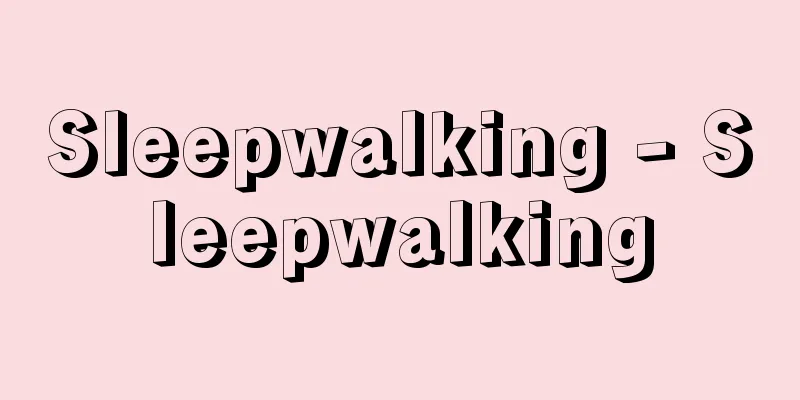Sleepwalking - Sleepwalking

|
During deep sleep known as non-REM sleep, the patient suddenly moves out of bed and walks around, which continues for a while after body movements that coincide with the time of turning over in bed. It is often considered synonymous with sleepwalking, and in the International Classification of Sleep Disorders, it is classified as a parasomnia in which abnormal behavior is observed during sleep or during the transition from sleep to wakefulness. The term sleepwalking was once used, but is now rarely used because it does not accurately describe the pathology. In addition, the patient may show abnormal behavior such as opening the door or changing clothes to go out, and sometimes may be accompanied by behavior similar to night terrors, such as screaming or yelling in fear. At first glance, the patient appears to be acting with a purpose, but their facial expression is blank, and they have no memory of these actions when they wake up the next morning. It is most common in children between the ages of 4 and 12, but it can also be seen in adults. Sleepwalking was once a broad concept that did not simply refer to abnormal behavior limited to sleep, but also included epileptic automatisms in which meaningless movements are repeated, dissociative symptoms in hysteria, and the sleepwalking state seen in delusions of possession. [Editorial Department] [Reference items] | |Source: Shogakukan Encyclopedia Nipponica About Encyclopedia Nipponica Information | Legend |
|
ノンレム睡眠とよばれる深い睡眠中に、寝返りをうつ時間帯に一致する体動に続いて、突然ベッドから起き上がったり周囲を歩き回るなどの行動がしばらくの間続く状態。睡眠時遊行症と同義とされることが多く、睡眠障害国際分類では睡眠中もしくは睡眠覚醒(かくせい)移行時などに異常行動がみられる睡眠時随伴症の一つに分類される。かつては夢中遊行症という呼称も使われたが、病態に対して的確でないという理由で現在ではほとんど使われない。ほかに、ドアを開けたり衣服を着替えて外出しようとするなどの異常行動を示すこともあり、ときにおびえて悲鳴や叫び声をあげるなど夜驚症に似た行動を伴うこともある。一見するとなにか目的があって行動しているようにみえるが、表情はうつろであり、翌朝目覚めたときにこうした行動について記憶していない。4~12歳ころの小児に多いが、成人にみられることもある。 夢遊病は、かつては睡眠中に限定した異常行動だけをいうのではなく、意味のない動作を反復するてんかんの自動症やヒステリーの解離症状、憑(つ)き物妄想でみられる夢遊状態なども含む広い概念であった。 [編集部] [参照項目] | |出典 小学館 日本大百科全書(ニッポニカ)日本大百科全書(ニッポニカ)について 情報 | 凡例 |
>>: Muyuju (Saraca indica; Asoka tree)
Recommend
Microclimate - Microclimate
Micrometeorology refers to atmospheric phenomena ...
Saussurea pulchella (English spelling) Saussurea pulchella
…[Mitsuru Hotta] [Aya Nitta]. … *Some of the term...
high strength low alloyed steel
...Those made by heat treatment are called temper...
Aphasia - aphasia
Aphasia refers to a condition in which a person ca...
Kinko - Kinko
A marine animal belonging to the phylum Echinoder...
Equation - Equation
Formally, an equation is an equation in which two...
Karla Guru - Karla Guru
…It is a transliteration of the Sanskrit kālāguru...
Newyorker
…It was one of the pioneering attempts of the pen...
Kyojofu - Today's climb
A person who carried taxes and other items from a ...
queen of the abyss
... The main cultivated species are R. leuchotric...
Heidelberg Catechism - Heidelberg Catechism
A translation of the German Heidelberger Katechism...
dal' (English spelling) dal
...There are many cases where the title of a job ...
Scoll - Scll
...any of several large mammals belonging to the ...
Worms
A historic city on the left bank of the middle Rhi...
Metachlamydae
…It includes about 60 orders, 300 families, 10,00...









